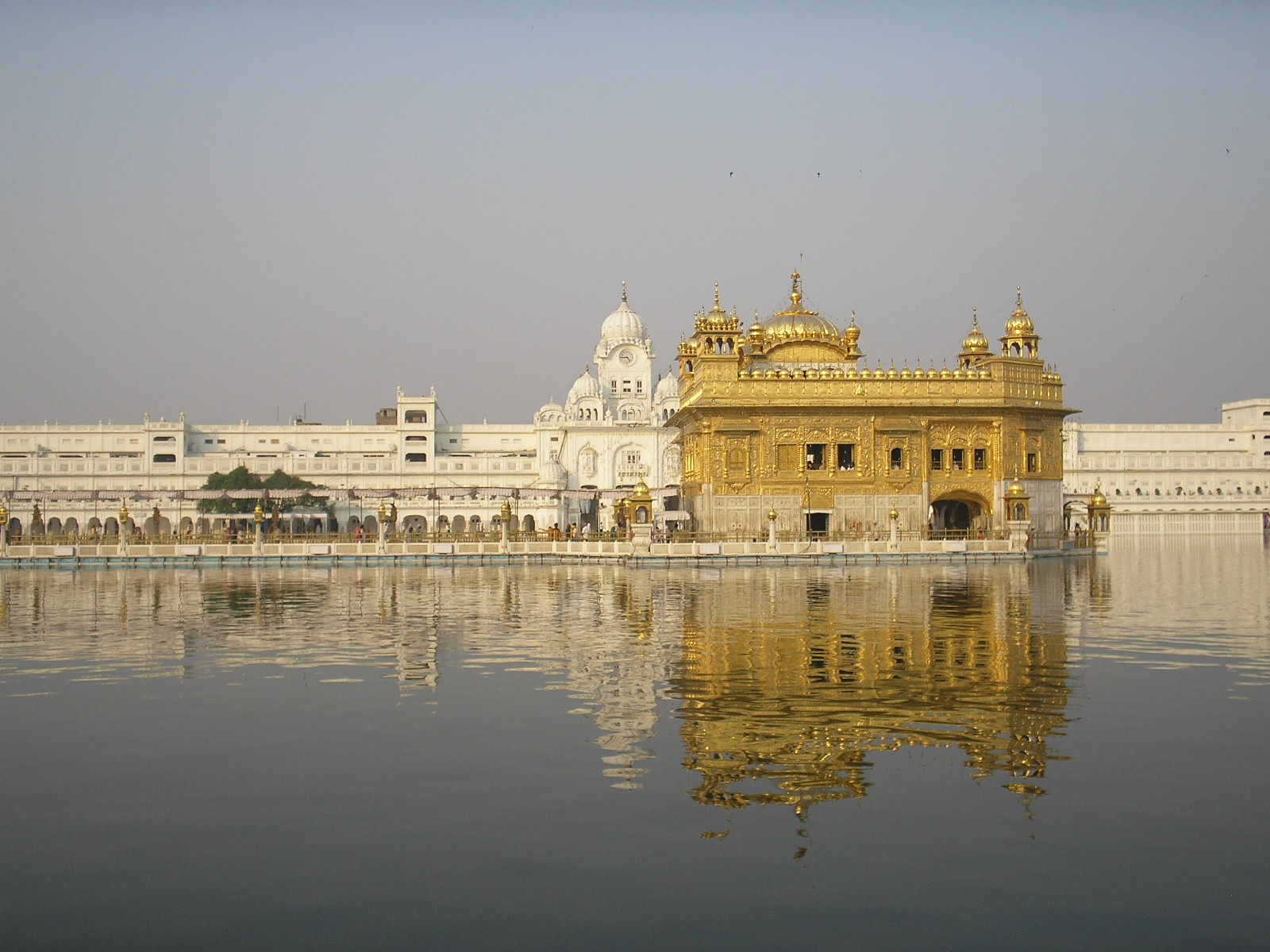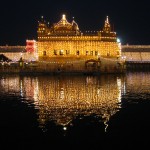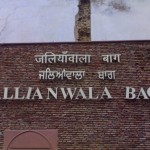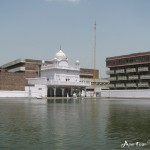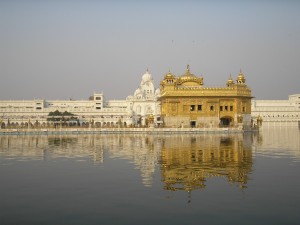
Amritsar, which literally means a pool of nectar, lies twenty kilometres east of the lndo-Pakistan border, is the Punjab state’s second largest town. It was founded in 1577 by Ram Das, the fourth guru of the Sikhs. Here a tank was excavated and a temple was got built by the Fifth Guru, Guru Arjan Dev in its midst and a new city began to grow up round the sacred pool.
The name Amritsar meaning ‘Pool of Nectar’, is named after the sacred pool around which the Sikh’s Golden Temple is built. Sikhs from all over the world come to pay their reverence to Guru Granth Sahib and take a dip in the Amrit Saras Kund (Pool of Immortality) for spiritual purification is the major landmark of the place. The present city dates back to the 15th century but there are evidence that this city is related to ramayan yug so city’s sacred heritage must be measured in terms of millenniums and not in centuries.
Amritsar Punjab is the spiritual capital of the Sikh faith. Amritsar city houses the holiest place for the Sikhs, The Golden Temple. They try at least to trip the temple and bathe in the large pool (sarovar) that atmosphere the temple when possible. The Punjab region has seen many rebellions and most of them had Amritsar Punjab as their essential point, Amritsar city is relaxing for visitors when compared with other Indian cities. The people are very friendly and it is great to sit for a few hours in the shade of The Golden Temple and to rest.
Amritsar city, exactly Pool of Nectar, derives its name from Amrit Sarovar, the sacred tank that surrounds the wonderful Golden Temple. First time visitors to Amritsar City could be forgiven for the feeling that Amritsar is like any other small town in north part of India. In one sense, it is – with busy markets, random traffic, steadfast cattle, crowds and jamming typical of small town India. But Amritsar city stands head and shoulders above any other city of India, its status eminent and sacred by the presence of the respected Golden Temple.
There is extra to Amritsar than that – along with other sights is Jallianwala Bagh, site of the dreadful massacre of unarmed Indians by British troops. A major tourist attraction these days is the Indo Pakistan border crossing at Wagah Border, just a short distance from Amritsar city, with its complex change-of-guards drill with a lot of blustering and intimidatory viewing off by both sides. If you are traveling north India, Amritsar is a city you should not miss. It’s easy to travel there from Delhi by road and by rail both.
Amritsar lied at a distance of about 280 miles from Delhi and is only 16 miles from Wagha, the outpost of the Indo-Pakistan border.The city is an important regional market center for agricultural goods, woollens, spices and dry fruits and also the center for India’s border security.
Today it is India’s important distribution centre of dry-fruits, tea (next only to Calcutta), of condiments and is a leading exporter of goods to the Middle East. Woollen tweeds, suitings, blankets, shawls in traditional weaves, ivory (now plastic) inlay furniture, swords of all designs, oils, scents, jutties (traditional embroidered shoes), cut-glass crockery, selective musical instruments, carpets are manufactured here almost in every bazaar.
Its pickles, murabbas (Indian jams) and papads and warian and sweetmeats are exported to far off places, right into Punjabi Diaspora abroad. With a population of about 4,00,000 and a number of educational institutions, business markets, industrial concerns, banks, hotels parks and restaurants, Amritsar still remains the most important, the largest and, perhaps, the most picturesque city in the Punjab. Amritsar is also characterised by the hard working and warm-hearted people.
History
The History of Amritsar can be traced back to the days of the Indus Valley Civilization. A number of archaeological sites have been found in Amritsar and other parts of Punjab. The history of Amritsar in the Vedic period was marked by the existence of a number of Sages and Saints and the legend of Ramayana, which considers the area to be the venue of Rishi Balmikis ashram and the birth place of Lavh and Kush.
The history of Amritsar points out at Greek influence on the region around 326 B.C. when the area came under the control of Alexander. With the defeat of the Greeks, the Mauryas annexed Amritsar, making it a part of their Empire. From the 4th century to the 6th century the history of Amritsar came to be linked with the history of the Gupta Empire. After a short period of rule by the Shahi Dynasty, the area came under the control of Sultan Mahmood of Ghazni.
It was from the 16th Century that the history of Amritsar came to be linked with the Sikh Gurus and their teachings. Sikh Guru Ram Das and his successor Guru Arjan Dev went on to create a temple around a small pool, that had healing powers and thus the name Amritsar. Slowly with people settling around the temple a town grew up. Over the years Amritsar underwent various historical developments and went on to fortified by Guru Govind Singh. The history of Amritsar during India’s Freedom Movement is a story of bloody struggles.
Major Tourist Attractions in Amritsar
The Golden Temple
Sri Harimandir Sahib, also known as Sri Darbar Sahib or Golden Temple is named after Hari(God) the temple of God. Sikhs from all over the world come here to pay their reverence to Guru Granth Sahib and take a dip in the Amrit Saras Kund for spiritual purification. The Golden Temple is the major landmark of the place. Founded by the fourth Guru of Sikhs, Guru Ram Das, the Golden Temple is a two storey marble structure, with an imposing dome of pure gold.
Jalianwala Bagh
Jalianwala Bagh reminds us of the brutal killing of the innocent people on April 13, 1919 by general Dyer, a British general. The mass massacre took lives of over 2000 unarmed people, who gathered there for meeting. This garden commemorates the martyrs, keeping the tragic episode in its historical context. Today, this site of brutal massacre, encloses a memorial with an eternal flame, dedicated to the martyrs.
Durgiana Temple
Located outside the Lohagarh gate of the old city, the temple is dedicated to Goddess Durga and is a centre of pilgrimage for devout Hindus. Other attractions of the city are Baba Atal Rai Tower, Ram Bagh garden, Fatehabad Mosque, Tarn Taran, Harike Wetland Wildlife Sanctuary, Wagha Border.
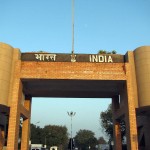 Wagah Border
Wagah Border
The international border between India and Pakistan. The pomp and pageantry of the Beating Retreat and the Change of Guard within handshaking distance of the Indian and Pakistani forces makes for a most charming spectacle.Wagah, an army outpost on Indo-Pak border – between Amritsar and Lahore, is an elaborate complex of buildings, roads and barriers on both sides. The daily highlight is the evening “Beating the Retreat” ceremony. Soldiers from both countries march in perfect drill, going through the steps of bringing down their respective national flags. As the sun goes down, nationalistic fervour rises and lights are switched on marking the end of the day amidst thunderous applause
Ram Bagh
Ram Bagh a beautiful garden ,an accustomed listener to the Neighs of thousand horses, announcing the arrival of the statesman of the century Maharaja Ranjit Singh (1780-1839) the Lion of Punjab, has in its heart the summer Palace of this great ruler. Maintenance free inbuilt cooling system designed in the Palace exhibits the architectural excellence and invokes a keen interest.The king of his time brought local chieftains under his control and virtually finished any eventuality of possible attacks on the kingdom raised by him. To commemorate the memory of his velour Ram Bagh on its one end has a lively statue of Maharaja Ranjit Singh saddled on a horse in a winsome posture.
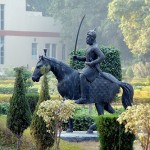 The garden was named by the ruler himself as a tribute to Guru Ram Das, the founder of the city. Now the summer palace of the Maharaja Ranjit Singh has been converted into a museum which speaks volumes on his times.On display are weapons dating back to Mughal times, portraits of ruling houses of Punjab and a replica of diamond “Kohinoor”. In those days the garden was approached by a huge fortified gate which still exists in its original form and is just on the periphery of the garden.
The garden was named by the ruler himself as a tribute to Guru Ram Das, the founder of the city. Now the summer palace of the Maharaja Ranjit Singh has been converted into a museum which speaks volumes on his times.On display are weapons dating back to Mughal times, portraits of ruling houses of Punjab and a replica of diamond “Kohinoor”. In those days the garden was approached by a huge fortified gate which still exists in its original form and is just on the periphery of the garden.
Ram Tirath
Located 11 Km West of Amritsar on Chogawan road, dates back to the period of Ramayana, Rishi Valmiki’s hermitage. The place has an ancient tank and many temples. A hut marks the site where Mata Sita gave birth to Luv & Kush and also, still extant are Rishi Valmiki’s hut and the well with stairs where Mata Sita used to take her bath. The Bedis of Punjab (Guru Nanak Dev , the founder Prophet of Sikhism was a Bedi) trace their descent from Kush and Sodhis (the 10th Prophet of Sikhism, Guru Gibind Singh was a Sodhi) from Luv. A four day fair, since times immemorial is held here starting on the full moon night in November. 16 Kilometres west on Choganwan road is Ram Tirath, commemorating Maharishi Balmik Ji´s heritage.
Pul Kanjari
It is another heritage sight built by Maharaja Ranjit Singh around which are sewn many tales and legends. Situated near the villages of Daoka and Dhanoa Kalan right on the Wagha border, Pul Kanjari is about 35 kms. Both from Amritsar & Lahore. The Maharaja would often rest and leisure here in the baradari while passing by along with his royal troop and retinues. Despite a ruined fort and a baoli-a bathing pool – this heritage sight has a temple, a Gurudwara and a mosque which bespeak of the secular concerns of the Maharaja. The inside of the dome on the corner of the baoli enshrines a number of scenes and sights from the Hindu scriptures and the Raj Darbar.These frescoes are laced with floral frames.
Samadhi of Guru Angad Dev Ji
About 30 km south east from Amritsar, and within easy reach from Goindwal Sahib is a Samadhi of the second Guru. It was built by Maharaja Ranjit Singh in 1815 A.D.
Jama Masjid Khairuddin
Built by Mohd. Khairuddin in 1876, this masjid is a place of architectural beauty situated in the Hall Bazar. This is the holy place from where a call against the British rule was given by Tootie-e-Hind, Shah Attaullah Bukhari.
Samadh of Shravan
About 6 Kilometres from Ajnala near Jastarwal (earlier known as Dashrathwal) is located one of the oldest heritage spots in Amritsar. It belongs to the Ramayana period a legend has it that Shravan lies buried here after the fell from the arrow of King Dashrath, the Lord of Ayodhya. The Samadh is situated on the banks of an old rivulet (Purani Dhab ).Shravan had taken his blind parents on a wide-ranging pilgrimage by cradling them on his shoulder in a wooden device.
Khoo Kalyanwala
The city has played a stellar role in the liberation of India from the British clutches. Freedom fighters like Madan Lal Dhingra, Ras Bihari Bose, S.Kartar Singh Sarabha, Dr. Satya Pal and Dr. Saif-ud-din Kitchlu are house-hold names in Amritsar.
When Mangal Pande blew the bugle of rebellion against the British in 1857, its echoes and shock-waves were felt in Amritsar also. A platoon of 400 soldier stationed at Lahore rebelled against the British Government by fleeing their barracks. The deserted soldiers bravely swam across the flooded Ravi and reached Ajnala.The information was received by Mr.Fredric Cooper, the then Deputy Commissioner of Amritsar.On his order, all of them were put in a coop-like room where almost 200 soldiers died of asphyxia. The rest of them were brutally shot dead the next morning and their dead bodies thrown in the well which is known as the Kalianwala Khoo in Tehsil Ajnala.
 The Historical Banyan Tree( Shaheedi Bohr)
The Historical Banyan Tree( Shaheedi Bohr)
This historical tree with massive girth and lushgreen canopy stands majestically in the Namdhari Shaheedi Samark against the majestic back drop of the northern boundary of Ram Bagh.Four Kookas were hanged from this tree by the British Government in 1871.The Kookas were hanged from this tree by the British Government in 1871 The Kookas were hanged because they had reacted violently against the hawking of beef around the Golden Temple.
How To Reach
By Air: Amritsar is connected by Indian Airlines flights to Delhi and Srinagar. There is a weekly flight to Birmingham and Kabul. Rajasansi airport is not far from the city and taxis are available for the transfers.
By Rail: Amritsar is connected with direct trains to delhi , Calcutta , Mumbai , Puri, and other places. The important ones include the Frontier Mail to Mumbai, Shatabdi Express to Delhi and Utkal Express to Puri. There are twice-weekly runs by Lahore Express, the train to Pakistan. Amritsar Railway station provides amenities including Retiring room and refreshment rooms. Taxis are available outside the station.
By Road: There is vast network of bus services of Punjab, Himachal , Delhi . Haryana, PEPSU, Chandigarh, U.P , J& K , Rajasthan state roadways, apart from private operators. Taxis are also available frequently. There are auto rickshaws and cycle rickshaws are also very common option for local transfers.
General Facts
State Punjab
Area 114 sq km
Language Hindi,Punjabi
Population 24,90,981
Longitude 74° 55′ E
Latitude 31° 37′ N
Photo Gallery Of Amritsar
Submit your review | |
